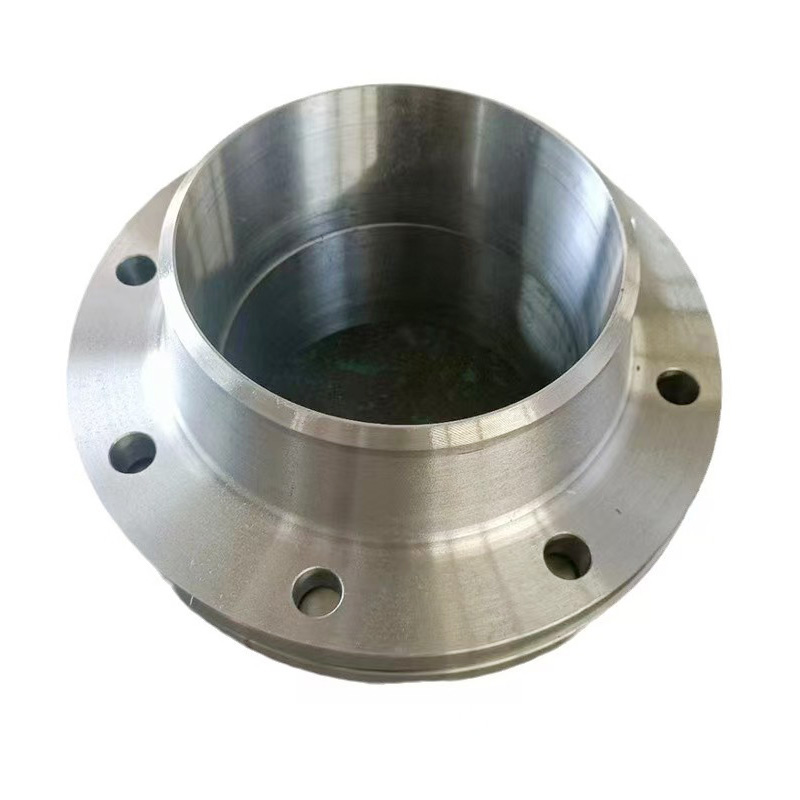
Weld Neck Flange
A Weld Neck Flange (WN Flange) is a type of piping flange designed to be welded to a pipe or fitting, providing high structural integrity and leak-proof performance. It is widely used in high-pressure, high-temperature, and critical applications across industries like oil & gas, petrochemical, power plants, and water treatment.
Key Features of Weld Neck Flanges:
Neck Design – Has a tapered hub that gradually transitions to the pipe wall thickness, reducing stress concentration.
Butt Weld Connection – The flange is welded to the pipe with a butt weld, ensuring a strong, leak-resistant joint.
Reinforcement – The long tapered neck provides reinforcement, making it suitable for high-pressure applications.
Smooth Bore – Ensures minimal turbulence and erosion in the pipeline.
Flange Face Types – Common face types include:
Raised Face (RF) – Most common, provides a sealing surface.
Flat Face (FF) – Used when mating with flat surfaces.
Ring-Type Joint (RTJ) – For high-pressure/temperature services.
Advantages of Weld Neck Flanges:
✔ High Strength & Durability – Ideal for extreme conditions.
✔ Reduced Stress Concentration – The tapered hub distributes stress evenly.
✔ Leak Prevention – The welded joint minimizes leakage risks.
✔ Easy Inspection – The weld can be inspected via NDT (Non-Destructive Testing).
Common Standards & Specifications:
ASME/ANSI B16.5 – For sizes up to 24" NPS.
ASME B16.47 – For larger sizes (Series A & B).
API 6A – For wellhead and Christmas tree equipment.
MSS SP-44 – For steel pipeline flanges.
EN 1092-1 – European standard.
Materials Used:
Carbon Steel (ASTM A105)
Stainless Steel (ASTM A182 F304/F316)
Alloy Steel (ASTM A182 F11/F22)
Duplex & Super Duplex (ASTM A182 F51/F53/F55)
Applications:
High-pressure piping systems
Steam lines
Hydrocarbon processing
Refineries & chemical plants
Offshore & subsea pipelines
Installation Considerations:
Requires skilled welding for proper joint integrity.
Must align properly with mating flanges to avoid misalignment stresses.
Gasket selection is critical for sealing performance.
Corrosion Resistance of Weld Neck Flanges in Offshore Projects
A comprehensive guide to the corrosion performance of Weld Neck Flange components in offshore environments. Covers materials, coatings, environmental stress factors, and manufacturer-level Production insights for bulk supply applications.
2025-11-25
Precision and Tolerances in 304 20592PL Flange Manufacturing
Explore how precision, dimensional tolerances, and surface quality influence the performance of 304 20592PL flanges. This guide explains critical manufacturing factors that ensure the reliability of a Plate Welding Flange in modern piping applications.
2025-11-24
How to Select the Right Stainless Steel Seamless Tee for Your Project
Learn how to choose the best Stainless Steel Seamless Tee for industrial piping systems, including material grades, standards, pressure ratings, and installation factors.
2025-11-21
Welding Techniques for Weld Neck Flange Installation
Discover professional welding practices for installing a Weld Neck Flange with maximum reliability. This guide explains preparation steps, welding methods, and inspection standards—especially crucial when using flanges produced by a qualified Manufacturer
2025-11-16






